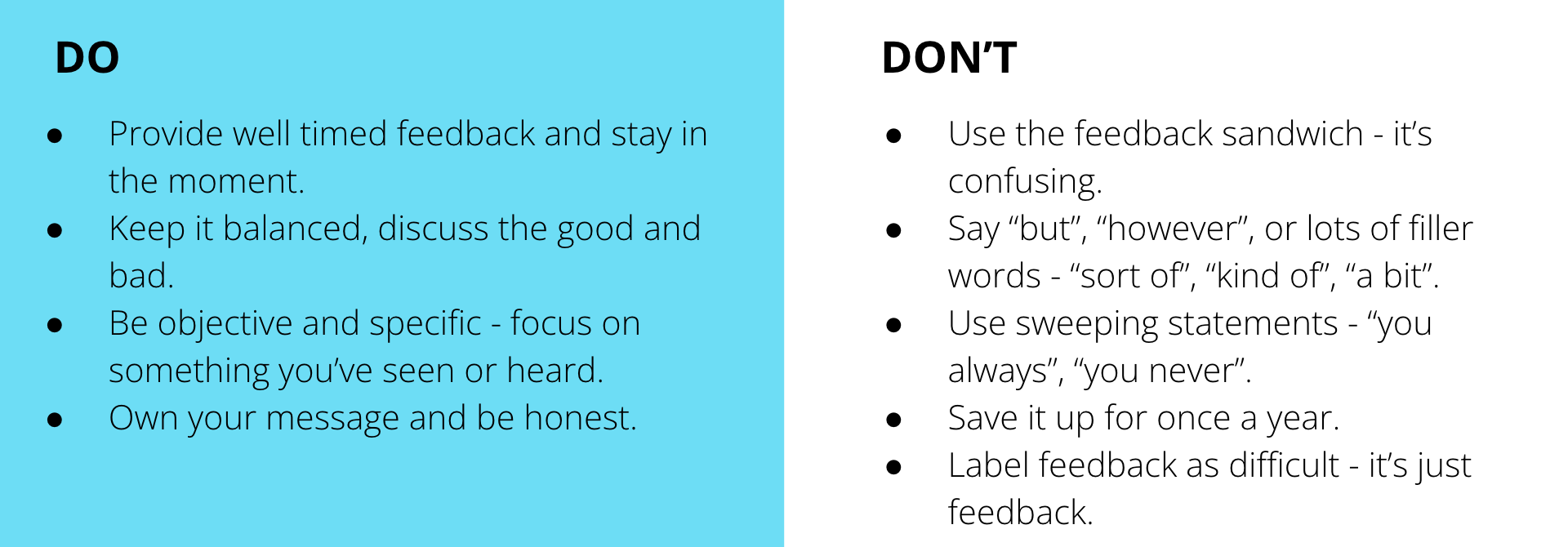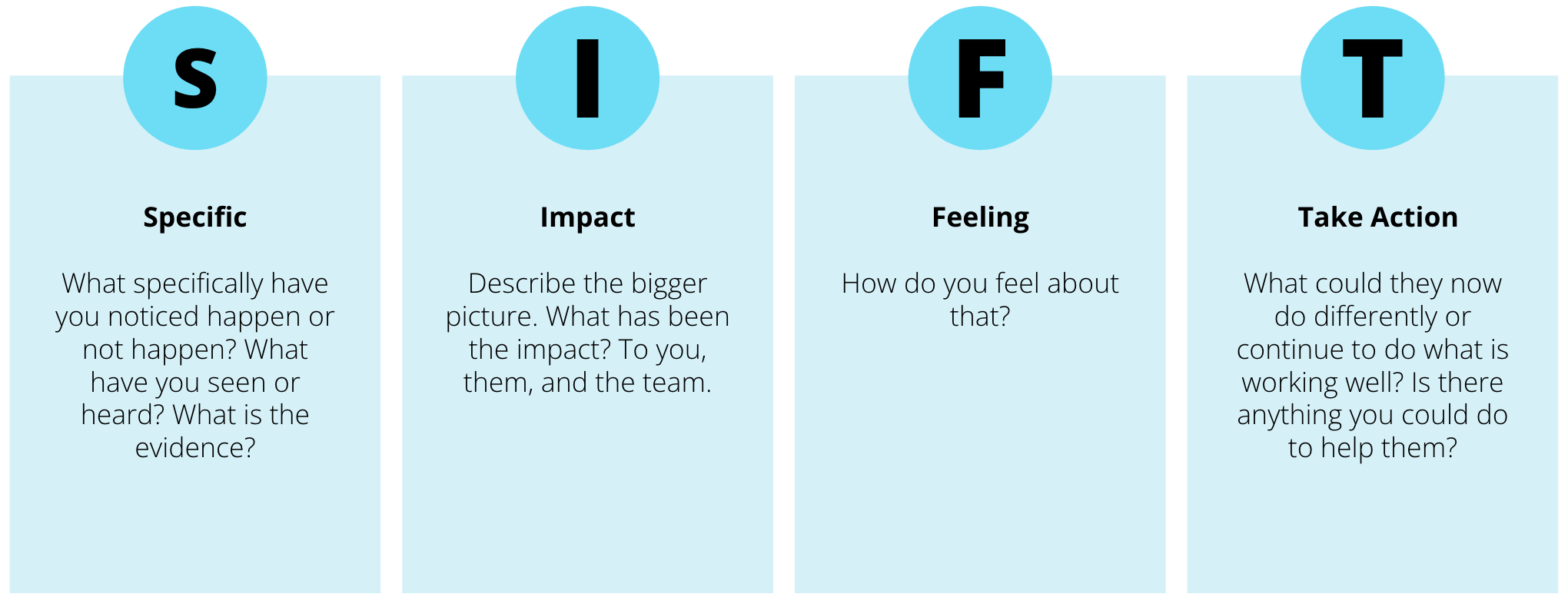Principles of great feedback
Regular feedback is essential to keep us motivated, on track with our performance and to drive our development.
How does it do this? Regular feedback can help us increase our levels of self-awareness and uncover any blind spots we may have about our own performance. Positive feedback is motivational; it reinforces the skills and behaviours that we do well and ensures that we continue to build on them. Developmental feedback can also be motivational; it enables us to see where we may have skill or behaviour gaps and inspires us to work out how to make the improvements.
DO’s & DON'Ts when giving feedback

Perception
People won’t accept feedback if they don’t believe it to be true or accurate. If they don’t accept it, what’s the point?
Why don’t they believe it to be true? Because they perceive the situation differently to you. We can be looking at the same thing as someone else and see something completely different.
In order to avoid this from happening, you can use the SIFT model to give feedback.
How to give feedback?

How to receive feedback?

Ideas on how to put these principles into practice
Continuity
Supervisors should not wait until the feedback appointment approaches but rather gather feedback ongoingly. A helpful method is to always have a document / notepad available to write down feedback on your employee’s actions once they happen. It will be way easier to monitor behaviour over the course of the feedback cycle.
Besides the official (quarterly/half-yearly/yearly) feedback talk, other channels for continuous feedback can be used. Give prompt feedback on a presentation / project execution / customer appointment ongoingly, using different channels, such as
- recurring weeklies or bi-weeklies with employees
- your primarily used communication tool, e.g. Slack, MS Teams, Skype etc.
- public praise spaces, such as leader boards, praise channels etc.
Accountability
Feedback needs to be acted on - from both sides, the employee as well as the supervisor. The first step towards the execution is the documentation of the agreed development goals. In Personio, you could use either the goal section within the performance module to document development goals or also monitor them directly in the employee profile.
Use the reminder function (e.g. six months after the start of the feedback cycle) and your recurring meetings to check on the progress while offering continuous support to enable employees to actually achieve their goals.
Follow-Up
Use agreed development goals from your last feedback talk to follow-up on their execution and success. Evaluate if all development goals were achieved and led to the desired outcome. Either you can already focus on new goals or follow-up on previous ones, by making them more specific or offering more support in order to achieve them.







